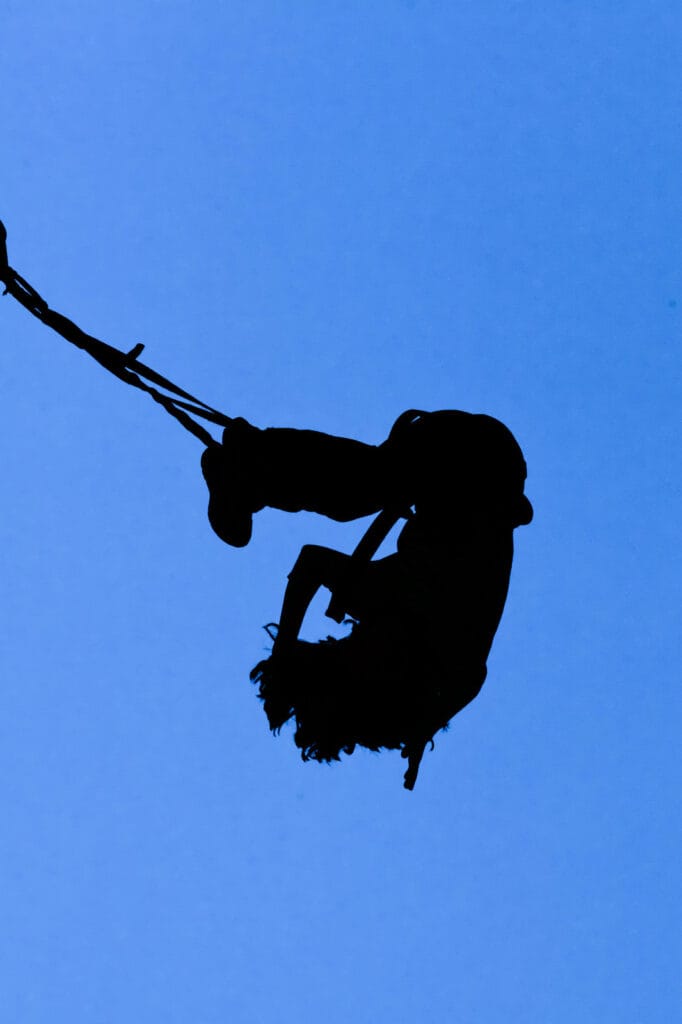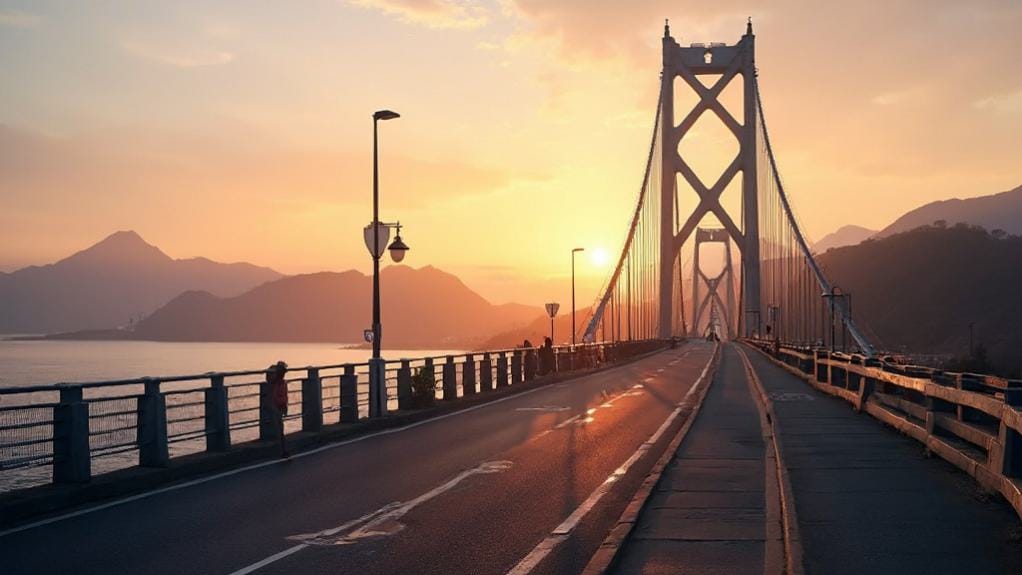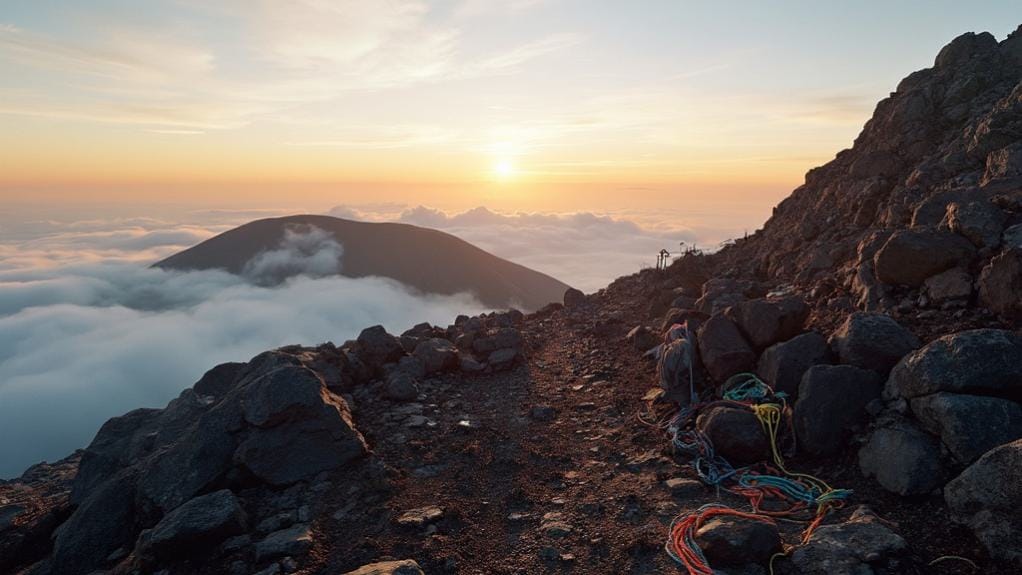Japan’s adventure scene is packed with heart-pounding thrills you won’t find anywhere else.
I’ve discovered incredible experiences like drifting at Ebisu Circuit‘s seven tracks, taking the 62-meter plunge at Sarugakyo’s bungee platform, and carving through Niseko’s legendary powder snow.
You can explore Okinawa’s crystal-clear waters by kayaking through ancient mangroves or diving with manta rays, tackle Mount Fuji’s challenging summit climb, or blast through the forest on ATV tours.
Don’t miss Fuji-Q Highland’s record-breaking coasters, the scenic Shimanami Kaido cycling route, or the rush of snorkeling in the Blue Cave.
These adventures are just the beginning of Japan’s adrenaline-pumping possibilities.
1) High-Speed Racing at Ebisu Circuit
The Ebisu Circuit stands as Japan’s premier destination for high-speed racing enthusiasts, featuring seven distinct tracks and two skid pad circuits nestled in Fukushima Prefecture.
Much like Sapporo’s winter activities at Mt. Teine, you’ll find diverse racing experiences here that’ll get your adrenaline pumping, from the renowned Minami course where professional drifters showcase their skills to the lengthy Higashi track with its pulse-quickening 420-meter straightaway.
Want to experience the thrill without getting behind the wheel? I’d recommend hopping into a ‘Drift Taxi’ with pro drivers like Nobushige Kumakubo.
If you’re feeling more adventurous, you can even learn to drift yourself at their extensive driving school.
Time your visit right, and you might catch the electrifying D1GP in August, where 5,000 spectators witness international drivers pushing their limits.
For those seeking the ultimate in luxury motorsports, private track sessions can be arranged with personal instructors and high-performance vehicles.
2) Bungee Jumping in Sarugakyo

Thrill-seekers looking for an unforgettable adrenaline rush should head to Sarugakyo’s 62-meter bungee platform, where you’ll plunge headfirst into one of Japan’s most spectacular gorges.
I can’t stress enough how seriously they take safety here – you’re in good hands with internationally certified jump masters who’ll triple-check every piece of equipment.
Before you take the leap, they’ll carefully calibrate the equipment to your weight (you’ll need to be between 88 and 230 pounds) and walk you through a thorough safety briefing.
While the 1-in-500,000 fatality rate might make you pause, it’s actually safer than driving to the site!
Just like Mount Fuji climbers, you’ll need to check weather conditions before attempting your jump.
If you’re feeling extra adventurous, grab their combo package and tackle both the Sarugakyo and Minakami bridges.
They’ll even whisk you back up using Japan’s first electric winch system.
Make sure to factor in daily activity costs when planning your Japan adventure budget.
3) Powder Skiing in Niseko

Nestled in Japan’s snowiest region, Niseko United’s four interconnected resorts offer world-class powder skiing across 47km of groomed slopes.
You’ll find yourself carving through pristine snow that falls relentlessly, thanks to Siberian winds meeting Sea of Japan moisture, creating over 15 meters of annual snowfall. After an exhilarating day on the slopes, unwind at Fuji hot springs for the ultimate relaxation experience.
Whether you’re a beginner or powder hound, the conditions here are simply magical.
For those seeking alternatives, the Chubu ski region offers excellent powder conditions just a few hours from Tokyo.
Here’s what makes Niseko unforgettable:
- Access all four resorts (Hanazono, Hirafu, Niseko Village, and Annupuri) with a single lift pass
- Take lessons in multiple languages from international ski schools
- Experience the legendary tree runs through natural forests
- Enjoy temperatures between -4°C to -11°C, perfect for maintaining that famous powder
I recommend visiting between late November and early May when you can truly experience why Niseko’s earned its reputation as Japan’s powder paradise.
4) Mangrove Kayaking in Okinawa
Paradise awaits paddlers at Gesashi Mangrove Forest, Okinawa’s largest collection of coastal mangroves and a designated national natural monument since 1972.
You’ll glide through a mesmerizing maze of twisted roots while rare subtropical creatures peek from their hideaways in this pristine ecosystem. Iriomote Island offers another breathtaking mangrove kayaking experience for those wanting to explore more of Okinawa’s waterways.
I’d recommend booking one of the kayaking tours that’ll take you on journeys lasting anywhere from one to five hours.
Whether you’re a novice or experienced paddler, you’ll find a route that suits your style as you navigate between ancient mangroves toward the Pacific Ocean.
Don’t forget to pack essentials like sunblock, spare clothes, and water shoes – you’ll want to stay comfortable while exploring this natural wonderland.
Getting here’s a breeze: hop on a bus from Naha or drive along Route 329 to immerse yourself in this unique Japanese adventure.
While exploring the waters around Okinawa, you might spot migrating humpback whales during their seasonal visits between January and March.
5) Cycling Across Hiroshima Bridge

Moving from Okinawa’s mangroves to Japan’s most spectacular cycling route, the Shimanami Kaido beckons riders to explore 70 kilometers of breathtaking coastal scenery.
You’ll find yourself crossing six magnificent bridges that connect a string of picturesque islands, each offering its own slice of Japanese charm. While Kyushu’s volcanic landscapes offer dramatic views to the south, the Shimanami Kaido provides a gentler coastal perspective.
To make the most of your cycling adventure:
- Rent a bike at Onomichi and catch the quick ferry to Mukaishima to start your journey
- Take advantage of the dedicated cycling paths and rest stations dotting the route
- Challenge yourself with the optional climb to Kirosan Observatory for jaw-dropping views of the Seto Inland Sea
- Sample local delicacies at roadside stations while giving your legs a well-deserved break
Don’t worry if you’re not a pro cyclist – the mostly flat terrain makes this route accessible to riders of all levels.
For winter enthusiasts, consider extending your Japanese cycling journey to experience Hokkaido’s ice floes during the -10°C to -20°C temperatures.
6) Skydiving Above Watarase Marsh
Thrill-seekers looking for Japan’s ultimate adrenaline rush will find it at Watarase Marsh, where you can experience the country’s longest free-fall skydiving adventure.
Just an hour from Tokyo, you’ll plummet from 4,000 meters, enjoying a heart-pounding 60 seconds of free fall while drinking in spectacular views of mountain ranges and the sprawling metropolis below.
I can’t think of a better way to appreciate the region’s natural wonders than spotting the distinctive heart-shaped Yanaka Lake and vast wetlands from above.
You’ll find getting there’s a breeze – hop on the Tobu Nikko Line to Fujioka Station, or take the Ibaraki Kotsu Bus to Ryujin Otsuribashi stop.
For those seeking varied terrain, the iconic Mount Fuji trails offer stunning vistas that rival your aerial perspective.
After your exhilarating descent, an electric winch system whisks you back up, ready for another jump if you’re brave enough.
For a more grounded adventure after your sky-high experience, consider exploring some of Japan’s scenic hiking trails that offer equally breathtaking views.
7) Mount Fuji Summer Climb

While skydiving offers a bird’s-eye view of Japan’s landscape, climbing Mount Fuji lets you experience the country’s most iconic peak up close and personal.
I’ll tell you right now – there’s nothing quite like watching the sun rise above the clouds from Japan’s highest point.
Off-season climbing is strictly prohibited due to dangerous weather conditions.
To make your Fuji climb a success, here’s what you need to know:
- Time your climb between early July and mid-September, with weekdays in early July being less crowded.
- Choose the Yoshida Trail if you’re a first-timer – it’s the most popular for good reason.
- Book a mountain hut halfway up to break your climb into two days and catch that magical sunrise.
- Layer up properly – even in summer, summit temperatures can plunge below freezing.
Trust me, when you’re standing at 12,388 feet watching the world wake up below you, every step will have been worth it.
Multiple mountain huts are available along the trail to provide shelter and basic amenities during your climb.
8) ATV Forest Adventures
After conquering Mount Fuji’s heights, you might want to explore Japan’s diverse landscapes from ground level on an ATV.
I’ve discovered some incredible locations where you can rev through nature, from Okinawa’s lush Yanbaru forests to Shizuoka’s Mt. Fuji-view trails that’ll take your breath away. The Yanbaru region offers some of Okinawa’s most pristine forest trails for ATV enthusiasts.
You’ll find thrilling options for every skill level, whether you’re yearning to cruise through Yamanashi’s cedar forests or explore ancient temples in Nara.
Most tours run about an hour and don’t require a license for private courses, though you’ll need to be at least 11 to drive solo.
Don’t worry about the weather – these adventures continue rain or shine, though lightning will shut things down.
At around 6,500 yen for adults, it’s an affordable way to get your adrenaline fix while experiencing Japan’s natural wonders.
For families seeking a different kind of adventure, Legoland Discovery Osaka offers indoor excitement with interactive building zones and rides.
9) Roller Coasters at Fuji-Q Highland
The towering shadow of Mount Fuji looms over Japan’s most extreme roller coasters at Fuji-Q Highland amusement park. If you’re ready to test your courage, I can tell you that these record-breaking thrill rides will push your adrenaline to new heights.
Early morning visits tend to have shorter queue times and better views of Mount Fuji.
After your thrilling rides, you can explore the AboutFuji Museum collection located near the park to learn about the region’s rich history.
You’ll find everything from Fujiyama, once the world’s tallest coaster, to Takabisha’s heart-stopping 121-degree freefall.
Here’s what you shouldn’t miss:
- Eejanaika: Experience 14 mind-bending inversions while your seat spins independently
- Fujiyama: Climb 79 meters high for breathtaking Mount Fuji views before plunging at 130 km/h
- Takabisha: Brace yourself for one of the steepest drops you’ll ever encounter
- Zokkon: Perfect for thrill-seekers who want a smoother yet exhilarating launch experience
10) Island Snorkeling and Diving
Out among the pristine waters surrounding Japan’s islands, you’ll find some of Asia’s most spectacular snorkeling and diving locations.
If you’re heading to Okinawa, I’d recommend starting at the famous Blue Cave, where crystalline waters illuminate limestone walls with an otherworldly azure glow.
For an unforgettable encounter with marine life, make your way to the Kerama Islands, where you might find yourself swimming alongside graceful sea turtles at Aharen Beach.
When you’re ready to venture deeper, consider exploring Manta City, where these majestic creatures glide through the depths like underwater birds.
The Yonaguni Monument offers an entirely different experience – here, you can drift dive past mysterious underwater structures while keeping an eye out for hammerhead sharks during winter months.
Water sports enthusiasts can find thrilling adventures year-round in Okinawa’s tropical climate.
With over seven prime locations scattered throughout the archipelago, Okinawa offers diverse diving experiences for every skill level.




